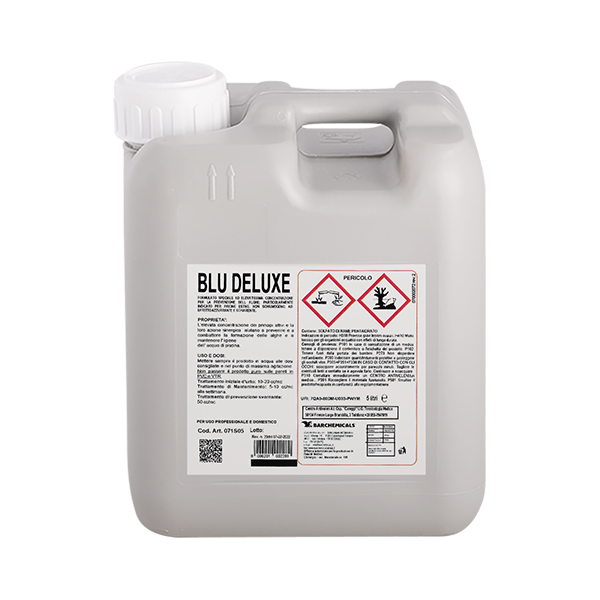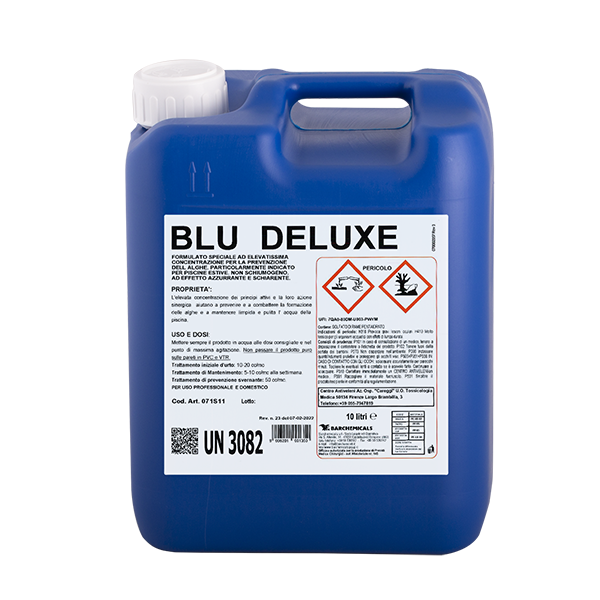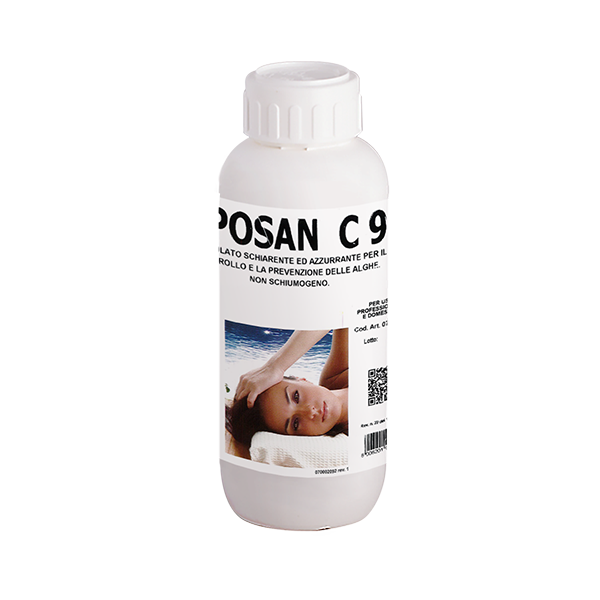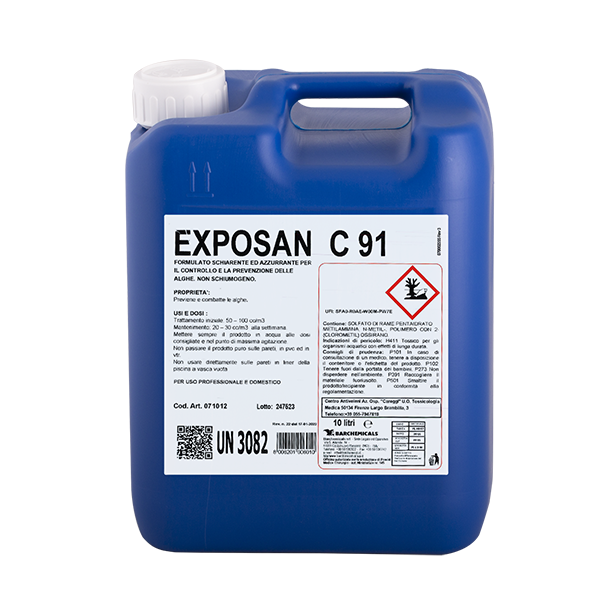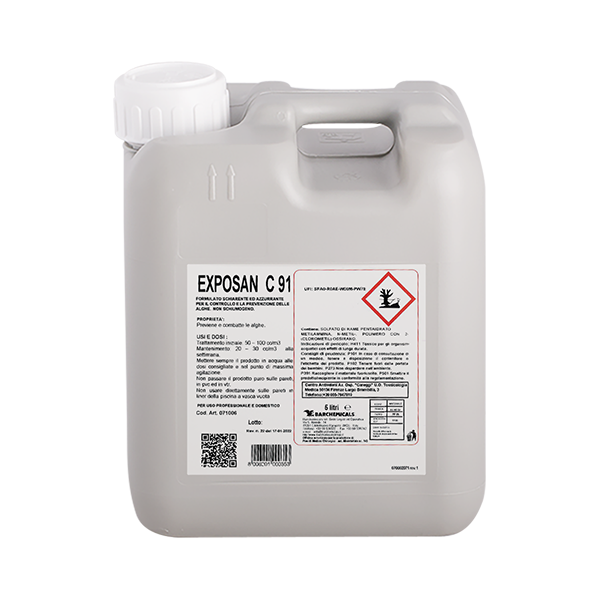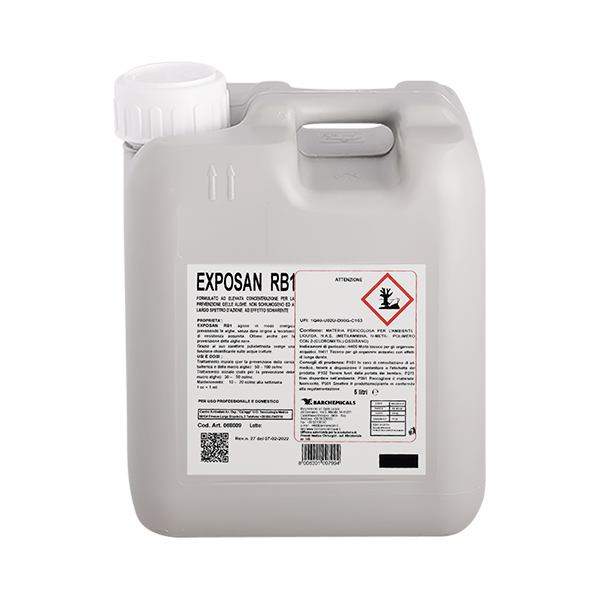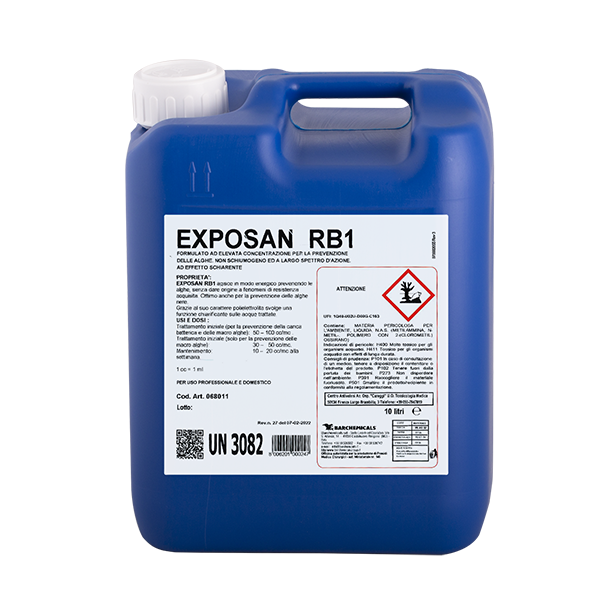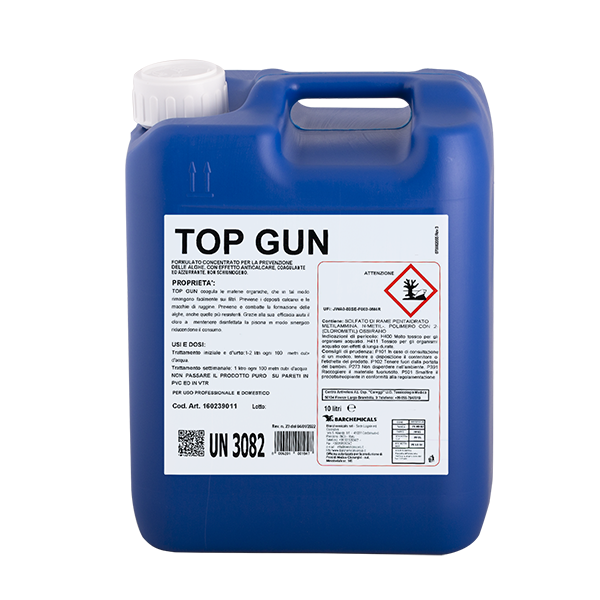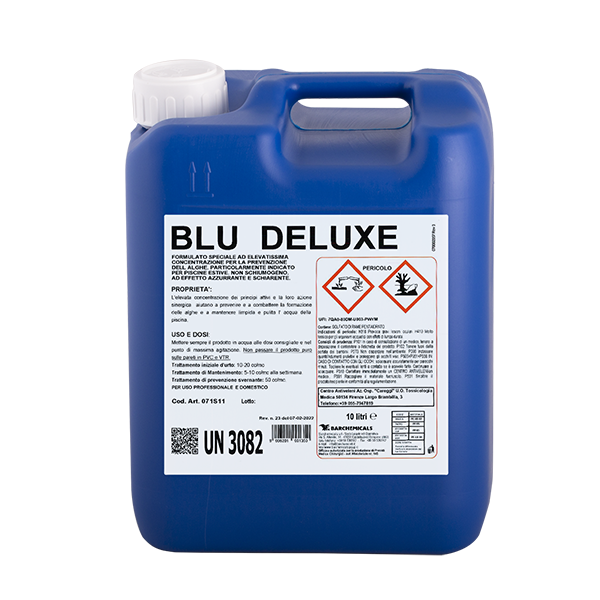The use of anti-algae prevents the formation of algae on the walls and bottom of the swimming pool thus hindering the re-appearance of verdigris, bluish and black colouring depending on the kind of algae.
The algae is the most commonly found problem in swimming pool water as well as being the most visibly evident. The algae themselves do not normally represent any health risk but during reproduction they release waste that becomes a source of nourishment for unwanted, harmful bacteria and other micro-organisms, thus encouraging their proliferation.
WHAT ALGAE ARE
The algae are autotrophic vegetable organisms whose spores can also be carried through the air.
The autotrophics grow thanks to mineral salts such as phosphates and carbon dioxide and light; via photosynthesis, they summarize the carbohydrates (organic matter) and release oxygen.
There are more than 20,000 species of algae, only some of them can be found in swimming pool water. As soon as the level of disinfectant drops too low, the algae start to take a foothold and multiply. All that is needed is an few hours on a hot day for a problem of algae to develop via the spores already found in them.
Green algae
These are the most common types of algae and can float or attach themselves to the swimming pool walls. They grow quickly and can make the swimming pool turbid within 24 hours. It is essential to dose the high concentration Chlorine (30/40 ppm) and the anti-algae in doses greater than 10 ppm, in order to eliminate them.
Yellow algae
These generally appear in shaded areas of the swimming pool under the form of yellowish marks. Once they have settled, they can resist up to 3-5 ppm of free Chlorine. They can, however, be easily eliminated thanks to the use of our EXPOSAN RB1.
Black algae
They form dark marks or black dots that are from 1 to 3 cm in diameter and firmly attach to the surfaces of the swimming pool. They grow slowly and are extremely resistant to Chlorine, but can be eliminated and prevented by combining the use of our ANTIALGA SUPER with the chlorination.
SYNERGIC ACTION
The combined action of Chlorine and algaecide has a greater anti-algae effect than if these products were used individually, in the same concentration.
The anti-algae split into two categories: specific algaecides and germicide algaecides that help the disinfecting product to be effective against the bacteria and other pathogens.
All our algaecides are characterised by not being foaming and therefore show no contraindications in any kind of pool. All our anti-algae products can be used even with cartridge or diatom filters.
INSTRUCTIONS FOR USE
Prior to filling up the swimming pool and after cleaning the walls of the pool properly with specific detergent products, we recommend you pass a concentrated anti-algae bactericide (EXPOSAN RB1) on the pool walls. After this, the pool can be filled up with the super-chlorination and addition of another anti-algae in order to meet the recommended dose. We recommend you do not use EXPOSAN C91, TOP GUN or BLU DELUXE directly on pool walls that are made of fibreglass or liner. In these cases use EXPOSAN RB1.
SEE COMPLETE LINE ->
